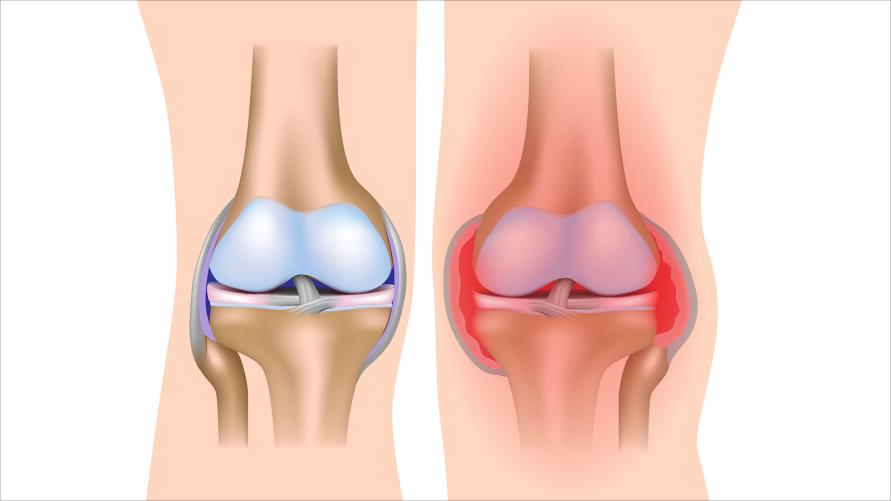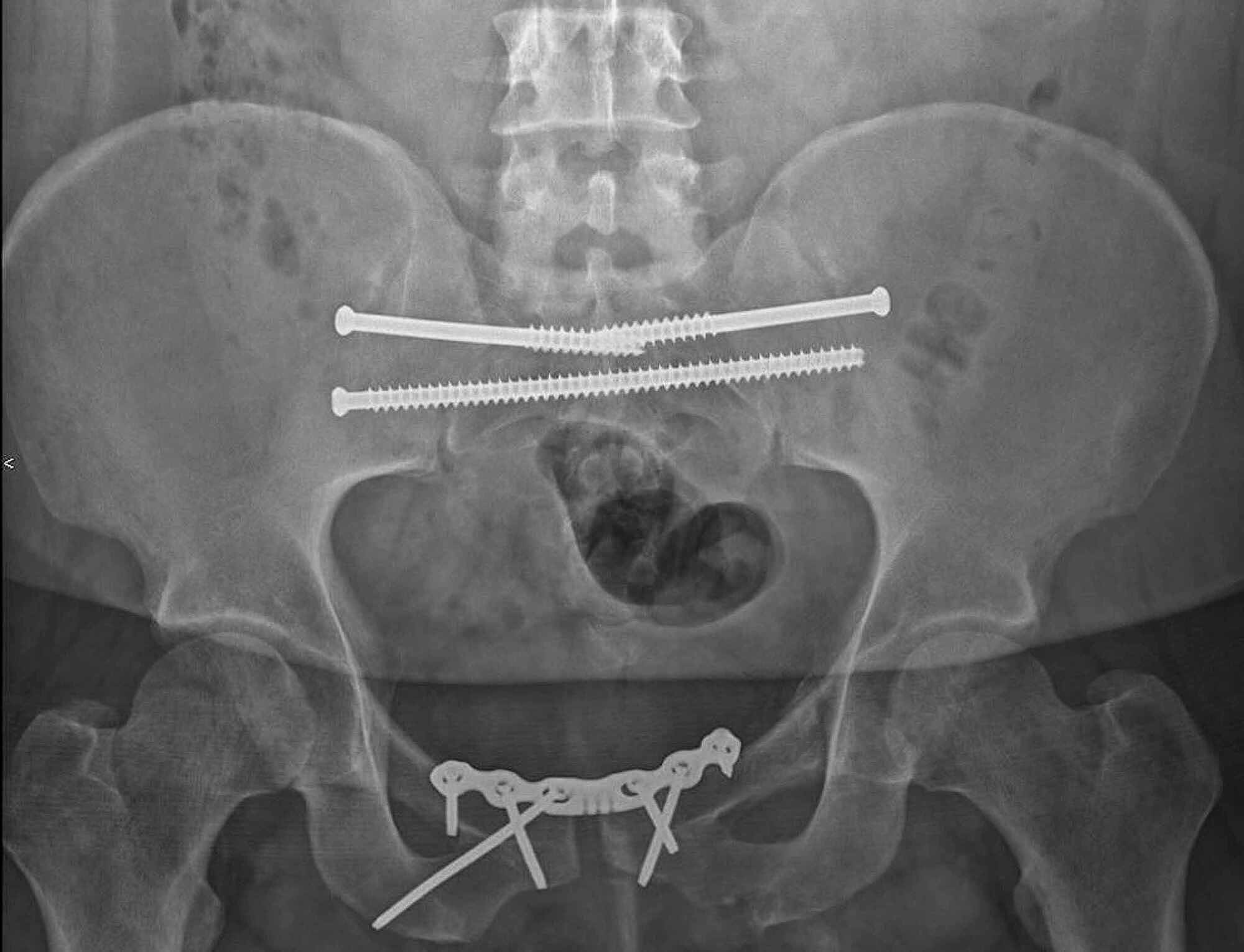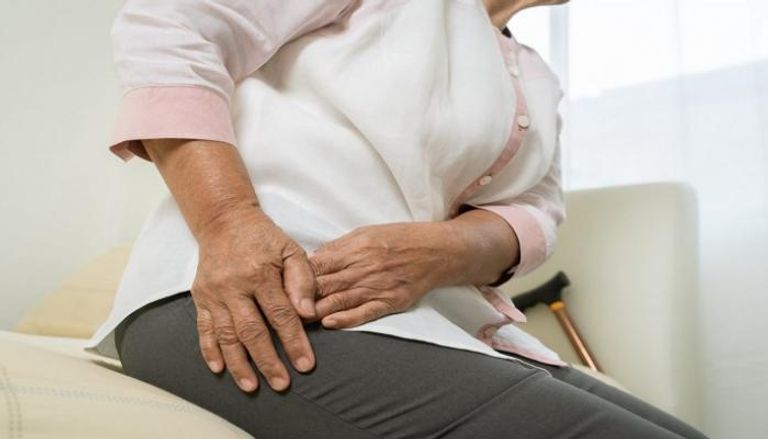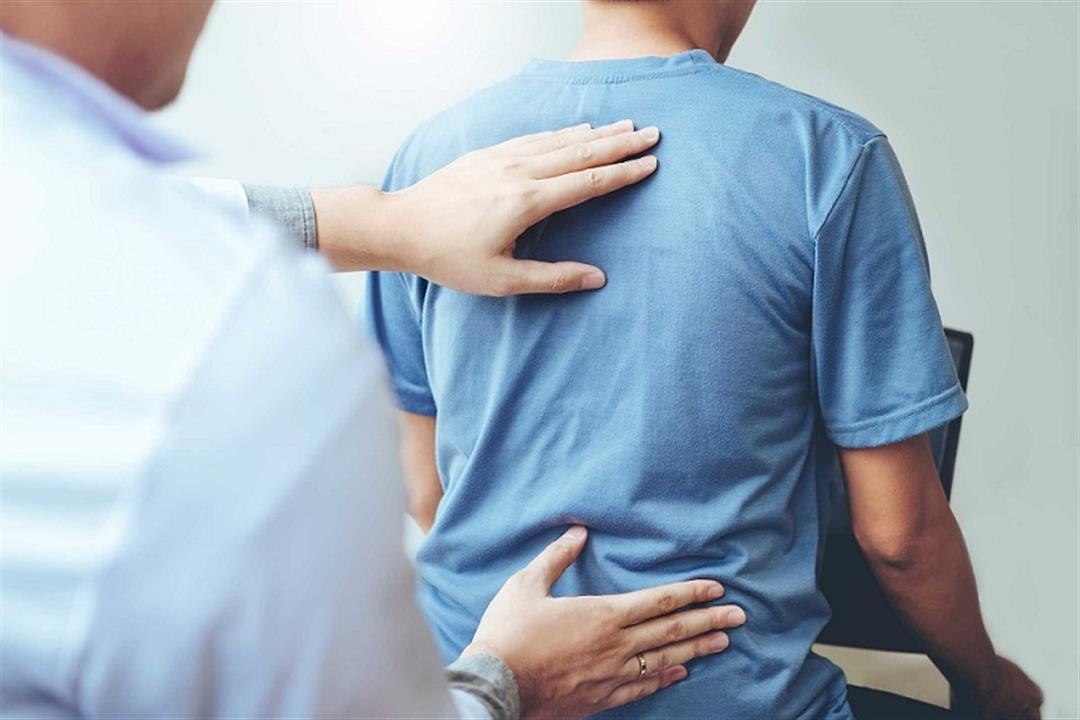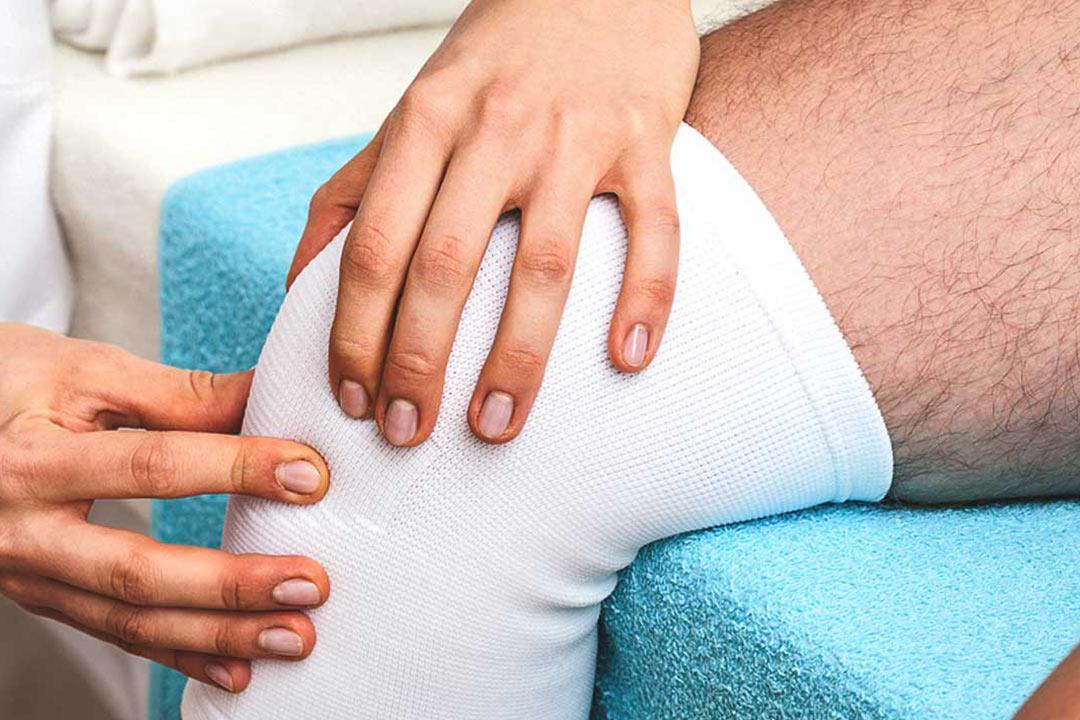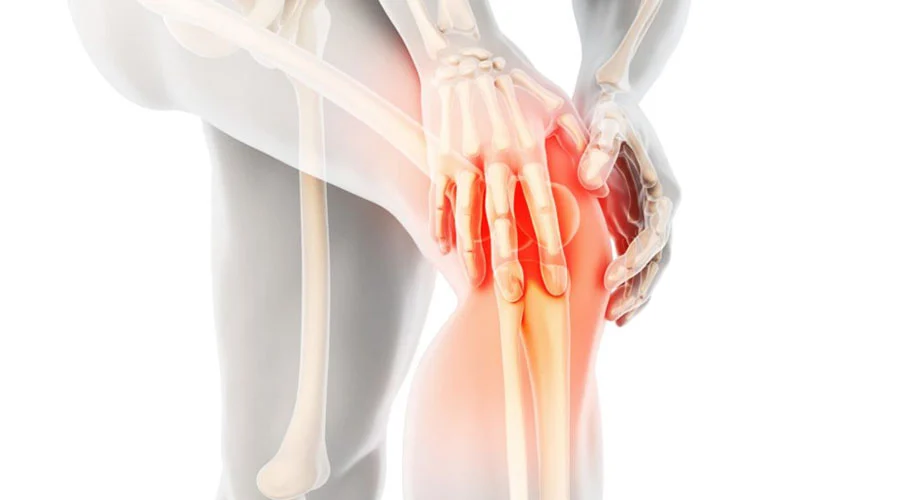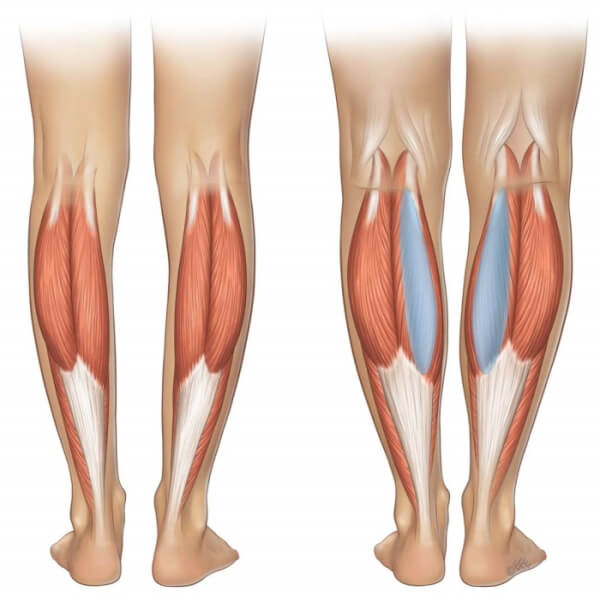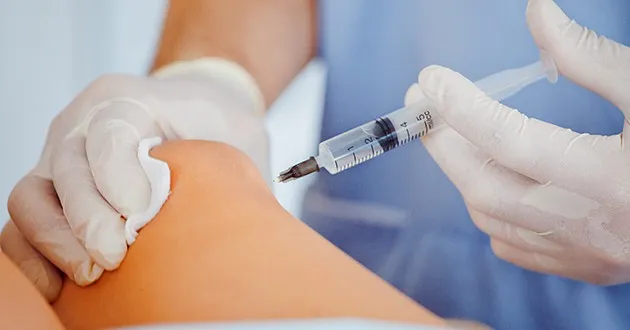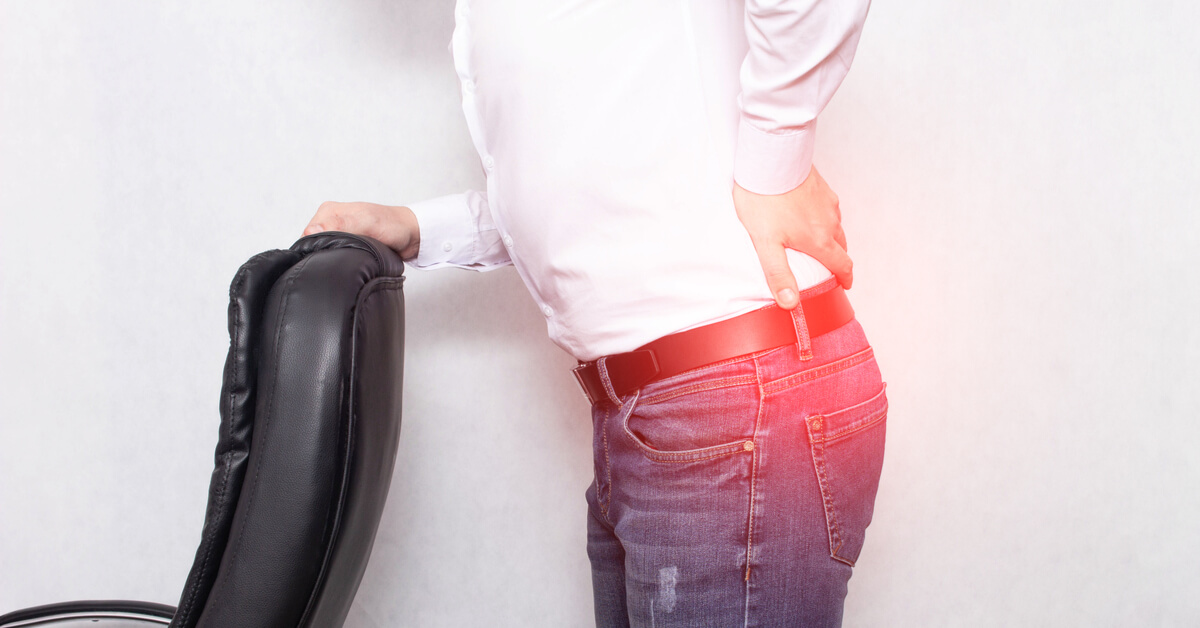!Important information about back disc surgery and the top 6 symptoms
Back disc surgery, in this article, we will explore the world of back disc surgery in depth and detail and shed light on the reasons that may require these operations, and we will address the different types of surgical procedures and what each type involves. We will also talk about the recovery process and caring for the patient after surgery, and provide advice on how to deal with potential pain and maintain back health. Our goal through this article is to provide the necessary information for individuals who may need back disc surgery, so they can better understand the procedure and make an informed decision about effectively treating their back problems.

Back disc surgery
Disc removal surgery in the back is a common surgical procedure used to treat back pain resulting from disc herniation and nerve compression. Disc herniation is a condition that causes pressure on the spine, resulting in acute pain and numbness in the affected area. In some cases, disc removal surgery is used to help relieve painful symptoms and restore normal body movement.
During disc removal surgery, the surgeon makes an incision in the back above the affected area. Through this incision, pressure on the spine is relieved and part of the damaged disc is removed. The surgeon uses special tools and a microscope to perform this procedure accurately and without further damaging the nerve. In addition to disc removal surgery, other methods are also available to treat disc herniation, such as general exercise. Exercise is an important part of the recovery process after spinal fusion surgery, as it helps return the patient to normal activity safely and avoid new injuries and back pain attacks.
Symptoms of disc herniation include acute arm or leg pain if the condition is in the lower back. Some patients may also suffer from muscle atrophy and numbness in the affected areas. Symptoms may worsen during movement or after long periods of sitting. Microscopic surgery is one of the ways that can be used to remove disc herniation that causes pressure on nerve roots. This procedure relies on the use of a small surgical microscope that allows the surgeon to see and access the affected area with high precision. This surgical intervention allows the surgeon to rectify the damage and remove the disc herniation accurately and with the least possible impact on the surrounding nerve tissues.
Prepare for a pain-free life with Dr. Amr Amal and disc surgery.
What is a back disc?
A back disc is one of the common medical problems that can affect the spine and cause pain in the lower back. The term “disc herniation” refers to a spinal condition where one of the vertebrae moves forward or backward and presses on the vertebra behind it. The symptoms of disc herniation are diverse and varied and may include pain that extends from the waist to the leg if the herniation is in the lumbar area of the lower back. In the case of herniation in the cervical area, the person may feel pain spreading to the arms and hands.
The back disc is part of the dense connective tissues in the spine, and these tissues work to provide support and protection for the spine and surrounding nerves. Discs consist of a gelatinous material called the “nucleus pulposus” and outer layers that are more rigid known as “annulus fibrosus”. The main function of the disc is to provide cushioning and cohesion between the vertebrae, thereby relieving pressure on them and maintaining the alignment of the spine.
When disc herniation occurs, this can lead to pressure on the nerves in the affected area. These pressures can cause various symptoms such as pain, numbness, tingling in the limbs, muscle weakness, and some studies suggest that psychological effects and nervous tension may increase the risk of disc herniation.
My experience with Dr. Amr Amal in treating back disc was amazing.
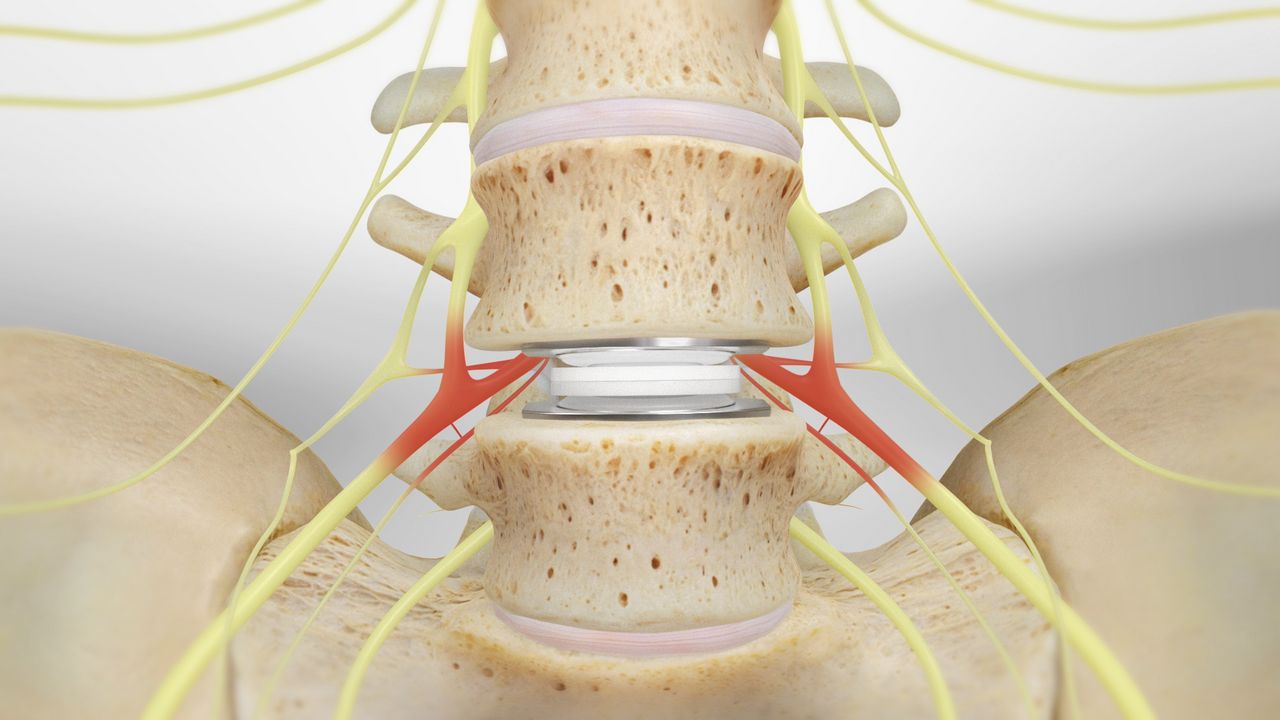
Back disc herniation symptoms
Many people may suffer from back problems, one of the most important of these problems is disc herniation. Disc herniation is a common condition caused by damage to one of the intervertebral discs located between the vertebrae of the spine. In this article, we will review the most important symptoms that may indicate disc herniation in the back:
- Back pain: Pain is one of the most prominent symptoms of disc herniation in the back. The pain can be severe and worsens with movement, especially when bending or lifting heavy objects. The pain extends from the herniation area to the leg and feet area in some cases.
- Numbness and tingling: A person with disc herniation may feel numbness or tingling in the affected leg. This is due to the pressure of the herniated disc on the nerves in the area.
- Muscle weakness: In the case of disc herniation, the affected person may suffer from weakness in the muscles of the affected leg and may find it difficult to lift heavy objects or walk long distances.
- Change in posture: A change in body posture may occur as a result of disc herniation. The affected person may notice a change in the position of the back or excessive curvature of the spine.
- Decreased endurance: Some affected people feel weak in their ability to endure and perform usual daily activities. They may find it difficult to walk for long periods or stand for extended periods.
- Other symptoms: The affected person may also suffer from other symptoms such as difficulty urinating or constipation, due to the pressure of the disc on adjacent nerves.
Are there any exercises or natural treatments for slipped disc back pain?
Yes, some aerobic exercises can help strengthen the muscles surrounding the back and legs, improve balance, and examples of these exercises include:
- Walking: Walking is a great exercise to strengthen muscles and improve body flexibility. It is preferable to walk on a flat, comfortable surface to minimize pressure on the herniated disc.
- Swimming: Swimming is a suitable sport for cases of disc herniation, as movement in water helps reduce weight and relieve pressure on the spine.
- Yoga and stretching: Some yoga and stretching exercises can help improve muscle flexibility and strengthen connective tissue surrounding the back.
The doctor may also recommend other treatments to relieve pain and improve the condition, such as physiotherapy, use of medical braces, and pain relievers. Ultimately, a person with symptoms of disc herniation in the back should consult a doctor for an accurate diagnosis of their condition and determination of appropriate treatment. The patient should adhere to the doctor’s instructions and treatment plan to achieve the best possible results and avoid worsening the condition.
Dr. Amr Aml is the expert who will guide you towards comfort and health with disc surgery.
Causes of Back Disc
Back disc is one of the common health problems that many people suffer from. The disc is made up of a spongy material containing a viscous substance that acts as a cushion between two vertebrae in the spine. If the disc changes shape or gets damaged, it can lead to painful symptoms in the back and spine. Here are the most likely causes of back disc:
- Aging:
- Aging is one of the common causes of back disc.
- Over time, the disc deteriorates and loses flexibility, which increases the risk of nerve irritation and back pain.
- Arthritis:
- Arthritis can damage the disc, with clear signs of inflammation like redness, swelling and tenderness.
- Back disc may develop into a larger problem as joint inflammation spreads to surrounding tissues.
- Injuries and trauma:
- Accidents or injuries to the back can deform the disc and damage surrounding tissues.
- Examples include falls, burns, sports collisions, or any other type of external violence that exposes the back.
- Spinal structure disorders:
- Spinal structure disorders like abnormalities in the neck or lower back can cause excessive tension and pressure on the disc.
- Problems like scoliosis or kyphosis can cause disc deformities and irritation of surrounding nerves.
- Poor daily activities:
- Long periods of sitting in an incorrect posture can deform the disc and irritate nerves.
- Incorrectly lifting heavy weights can also damage the disc and irritate nerves.
- Weight gain:
- Excess weight on the back can weaken the disc and make it more prone to damage and irritation.
- It’s important for overweight people to exercise and follow a healthy diet to maintain back health.
A thorough medical examination is necessary if any painful symptoms appear in the back or spine. Doctors can provide appropriate advice and develop a treatment plan tailored to each individual.
My experience with Dr. Amr Aml was an exceptional one in treating back disc.
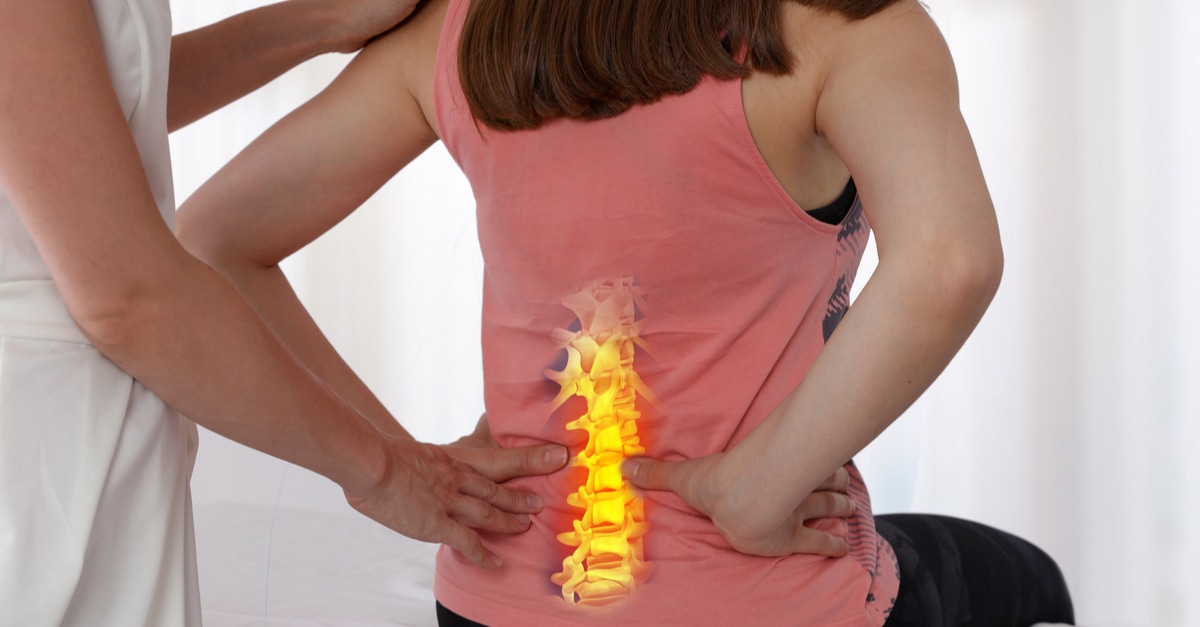
How is back disc surgery with endoscope done?
When a person has back disc problems, doctors usually try non-surgical treatment first. But if that fails, surgery may be required. Endoscopic discectomy is one of the newest and most effective methods to correct this problem. Here’s an article explaining how the surgery is performed in detail.
1. Preparing for surgery: An endoscopic discectomy starts with preparing the patient for surgery. The patient may need to lie on their side under local or general anesthesia, depending on the doctor’s decision and patient’s condition. It’s best for the patient to refrain from eating or drinking before surgery to ensure an empty stomach.
2. Performing endoscopic surgery: Once the patient is positioned and ready for surgery, a small 2 cm diameter needle is inserted into the lower back. This needle carries a tiny camera allowing the surgeon to see through it. The camera is used to image the disc’s internal structure and locate damaged areas.
3. Removing damaged disc: After identifying the damaged part of the spinal disc, the surgeon removes the affected disc material. This aims to reduce pain and improve spinal mobility.
4. Reducing pressure on the spine: An endoscopic discectomy in the back is one way to relieve pressure on the spine. By removing the swollen or damaged part of the disc, the pressure exerted on the spine is significantly reduced.
5. Benefits of endoscopic surgery: Endoscopic discectomy offers many advantages. This type of surgery is less invasive and requires less effort, meaning there are fewer risks. Additionally, the recovery period is usually short after surgery, often allowing the patient to return to their routine quickly.
Despite the efficacy of endoscopic discectomy, consulting a specialist is always advisable before making any treatment decisions. They are best suited to evaluate the patient’s condition and provide appropriate advice and guidance towards suitable treatment.
My experience with Dr. Amr Aml was a distinctive one in treating back disc.
Recovery duration after back disc surgery with endoscope
Endoscopic surgery to treat slipped disc is an effective option to relieve pain and improve spinal mobility. However, knowing the recovery duration from this surgery is hugely important for patients undergoing it.
Recovery time after back disc surgery with endoscope can vary based on several factors. These include the patient’s age and overall health condition, presence of other chronic illnesses, and the size and location of the slip in the spine.
Overall, recovery after back disc surgery with endoscope takes around 4-6 weeks. After this period, the patient can start gradually resuming normal activity. Patience is key during this period, along with adherence to the surgeon’s instructions and ongoing treatment plan.
In the initial recovery period after surgery, the patient may experience some pain that gradually subsides over time. This pain should completely disappear after about 4 weeks from surgery. However, intermittent pain may persist for a few months. Therefore, patience and continuing the treatment regimen are crucial for achieving the desired results.
Physiotherapy is an important part of the recovery process after back disc surgery with endoscope. The patient should start walking and perform specific physiotherapy exercises prescribed by their treating doctors. These exercises help strengthen muscles surrounding the spine and improve flexibility, stability, and posture. Notably, recovery time can vary between individuals based on individual factors. Patients should consult their surgeon regarding their specific condition and adhere to their advice and guidance.
We guarantee significant improvement in your condition after back disc surgery with Dr. Amr Aml.

Is disc surgery successful?
Disc herniation is one of the common conditions that many people around the world suffer from, as the disc is one of the important parts of the spine, as it provides cushioning and relieves pressure on the vertebrae. If the disc is slipped or torn, it can cause severe pain and nerve contractions in the surrounding nerves. So is disc surgery successful? This question is one of the important questions asked by many who suffer from this disease. The answer to this question is not as easy as some people think, as the success rate of disc herniation surgery varies based on several factors.
- First, the success rate of the surgery depends on the surgeon’s skill, as this surgery requires high expertise and skill from the surgeon. Therefore, it is always advisable to choose an experienced surgeon with an excellent reputation in this field.
- Secondly, the success rate of the surgery is affected by the patient’s condition. If the patient’s condition is poor due to other accompanying diseases, this may negatively affect the success of the surgery. Therefore, the patient must adhere to the doctor’s instructions before and after surgery to ensure the best results.
- Thirdly, the success of the surgery is influenced by the medical techniques used. With the development of medical technology, new techniques have emerged that help increase the success rate of operations. For example, the use of endoscopes in surgical procedures helps reduce side effects and speed up the healing process.
- Fourth, it should be noted that there are inaccurate rumors that have caused fear of surgical operations, including disc operations. Despite some potential complications such as wound infections or blood clots, the success rate of surgical procedures requiring spinal fixation or disc removal reaches 100%.
Relieving pain and restoring normal life is possible with disc surgery with Dr. Amr Aml.
Risks of back disc surgery
Back disc surgery, also known as spinal surgery, is one of the critical surgical procedures that people with back problems may need. Despite the importance of this surgery in relieving pain and improving overall health, there are some risks that may accompany it and should be taken into account. A misdiagnosis can lead to unnecessary back surgery, which can negatively impact outcomes and increase potential complications. Additionally, back disc surgery is one of the most dangerous surgical procedures and can have a significant impact on the patient’s daily life. One of the common risks of this type of surgery is weight gain due to limited movement after surgery and its effect on the chronic back condition.
In addition, studies indicate that there is a probability of inflammation after surgery, and patients must carefully follow their doctors’ instructions regarding infection warnings, blood clot signs, and infection. Treating inflammation may require taking antibiotics, and nerve and blood vessel damage may also occur during surgery, increasing the patient’s recovery and healing time. Therefore, people undergoing back disc surgery should be prepared for these risks and seek help and advice from their treating physicians.
Avoiding exposure to the risks of back disc surgery cannot be fully achieved, but some precautions can be taken to reduce these risks. Maintaining a healthy weight and avoiding strenuous activities that may increase body pressure on the back is also recommended. Patients should also carefully follow their doctor’s guidance regarding what to do and avoid after surgery. If these preventive measures are observed, the risks of back disc surgery may be reduced, and better results can be achieved for patients.
Dr. Amr Aml offers flexible financing options to facilitate back disc surgery.

How to prevent back disc disease
Back disc disease is a common condition that many people suffer from and can cause annoying pain and negatively impact daily life. Back pain can result from multiple factors such as poor posture and incorrect movements, and in some cases, the cause is hereditary, especially with modern lifestyle that relies on long sitting and lack of regular physical activity. In this medical guide, we will provide you with some important tips to prevent back disc disease and take care of it:
- Exercise regularly: Exercising regularly is one of the best ways to maintain back health and strengthen its muscles. It is advisable to practice exercises that focus on strengthening and stretching the back muscles, such as yoga and swimming.
- Sit with proper posture: Be sure to sit in the correct posture to reduce harmful effects on the back. Keep your back straight at a right angle and avoid incorrect sitting positions that put pressure on the disc.
- Use a supportive pillow: Placing a supportive pillow under the back helps reduce pressure on the disc and relieve pain while sitting for long periods or while driving. Choose a pillow that suits your use and promotes proper back support.
- Avoid harmful positions: Avoid positions that place excessive pressure on the spine, such as excessive neck bending for long periods, and lifting phones or mobile devices upwards protects the neck from excessive tension.
- Maintain proper sleep posture: Choosing a correct sleeping position promotes spine straightness and reduces pressure on the disc. It is preferable to sleep on your side or back using a suitable pillow to support your back and neck.
- Maintain a healthy weight: Maintaining a healthy weight reduces pressure on the spine and reduces the likelihood of developing back disc disease. Following a balanced diet and exercising regularly will help you achieve that.
- Stay away from smoking: Smoking leads to reduced blood flow to the tissues and cartilage in the back, increasing the likelihood of back pain and disc damage. Therefore, it is best to stay away from smoking as it has a positive effect on back health.
If you experience severe back pain, it is best to consult your doctor for an accurate diagnosis and appropriate treatment. Treatment may include using pain relievers and other medical guidance based on your health condition.
We are here to help you overcome back pain through disc surgery with Dr. Amr Aml.
What is the price of back disc surgery with an endoscope?
Treating disc herniation with an endoscope is one of the modern methods in medicine, where a thin tube is inserted through the skin to reach the affected area, which helps reduce the impact on tissues and muscles and allows the removal of damaged cartilage. When it comes to the price of back disc surgery with an endoscope, it varies according to several factors. Typically, the cost of endoscopic disc herniation surgery ranges from 20,000 to 70,000 Egyptian pounds, and this depends on several factors, including the surgeon performing the surgery and his experience and efficiency. The price of surgery may also vary depending on the location of the affected disc. For example, the prices of neck disc surgeries may differ from the prices of lumbar (lower back) disc surgeries.
Prices may also vary if surgery is performed using modern techniques such as an endoscope. The cost of lumbar spinal fixation surgery is expected to rise to 40 to 80 thousand Egyptian pounds. This is due to the use of more advanced techniques that allow the surgeon to work precisely without negatively affecting the tissues and muscles surrounding the affected area. It is worth mentioning that the price of back curvature surgery starts from 150,000 Egyptian pounds, while the price of disc herniation surgery starts from 35,000 Egyptian pounds. The specialized doctor should also be consulted to diagnose the condition and determine the appropriate price for the required surgery.
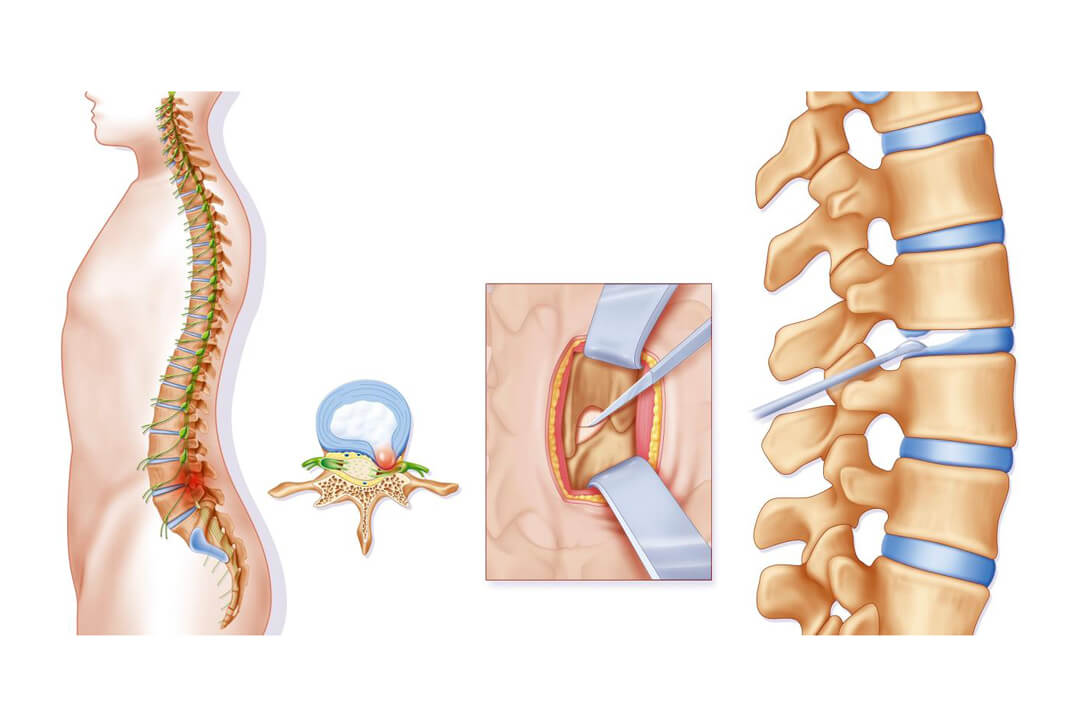
Best spinal surgeon in Egypt
Dr. Amr Aml is one of the best spinal surgeons in Egypt working at Dar Al Fouad Medical Tower, an accredited hospital equipped with state-of-the-art surgical technology. Dr. Amr Aml has many years of experience in surgery and specializes in spinal, bone, and joint surgery.
Dr. Amr Aml provides high-quality medical services with personal care for each patient and strives to achieve the best results for patients through accurate diagnosis and innovative treatment options. He has exceptional skills in cosmetic spinal surgery and orthopedic correction, precisely restoring the structure of the spine according to each patient’s needs.
Dr. Amr Aml is a member of the Egyptian Society for Bone Surgery, indicating peers’ recognition of his skills and adherence to global surgical standards. He has a good reputation and history of successes in performing major spinal surgeries. Dr. Amr Aml also has excellent patient reviews as patients enjoy comfort and confidence in his medical services.
If you need a spinal surgeon in Egypt, Dr. Amr Aml is the ideal choice for you, seeking patient satisfaction and achieving the best results. Committed to quality and professionalism in everything he provides, you can rely on his expertise and get the optimal medical care to relieve spinal pain and improve your quality of life.

